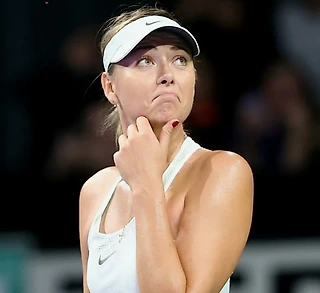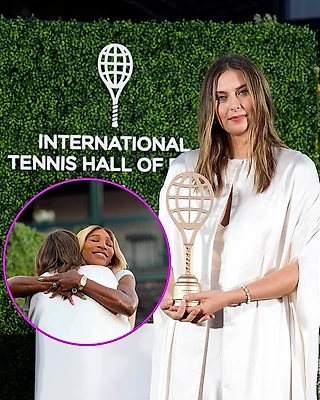Sharapova’s Case Shows How Unforced Errors Hurt Cleanup Efforts
By CHRISTOPHER CLAREY OCT. 4, 2016
With her doping suspension reduced to 15 months, from two years, Maria Sharapova and her legal team sounded triumphant on Tuesday.
But the truth is that nobody should be pumping a fist and bellowing, “Come on!” when it comes to the Sharapova case. None of the major players ended up winners.
Not the World Anti-Doping Agency, which botched the introduction of meldonium to its banned list this year, undermining faith in the system at a moment when faith is imperative.
Not Sharapova, who made errors in judgment and will still miss more than a year of competitive tennis and take a major financial hit for what the Court of Arbitration for Sport concluded on Tuesday was essentially an administrative oversight.
Certainly not the International Tennis Federation, which again had a tribunal overruled by the sports court in an important case, in this instance even being taken to task by the court.
“They keep getting flipped,” the American sports lawyer Paul Greene said, using the industry term for “overturned.”
Yes, they do. See, for a start, the cases of the prominent men’s players Marin Cilic and Viktor Troicki in 2013, when Cilic’s ban was reduced to four months, from nine, and Troicki’s to a year, from 18 months.
It appears to be time for yet another under-duress look at change, which has become the rule in tennis throughout this year of upheaval.
An independent commission is already at work scrutinizing the sport’s integrity amid concerns about match fixing, particularly at the lower levels of the game.
There are still legitimate concerns about the depth and effectiveness of tennis’s antidoping program even though there has been an increase in out-of-competition testing along with the welcome — if overdue — decision to make the system more transparent by announcing positive tests publicly before adjudication.
ESPN reported Tuesday that in a confidential survey it had conducted with 31 professional tennis players this year, 65 percent of the respondents said that the sport still did not test enough and that they personally knew a player who had used performance-enhancing drugs.
There are even bigger concerns about all the stars who might have slipped through the big cracks when oversight was considerably weaker. If tennis is not testing stored samples from years and Grand Slam events past — the I.T.F. will not confirm or deny this — it most certainly should be.
If and when the smoke finally clears, this all may prove to have been worth the trouble. But the tumult of this year has been painful and, in Sharapova’s case, maddeningly avoidable.
Sharapova, who said she had taken meldonium under the brand name Mildronate for 10 years to help with a variety of health problems, should have known that there had been a change to the banned list. But as the sports court made clear in its ruling, antidoping authorities and tennis authorities should have done a better job of letting players know that a long-permissible drug was now off limits.
“I think we have an obligation to look at how we are advising and educating our athletes to make sure that we’re doing everything we can and that this doesn’t ever happen again to another athlete,” Steve Simon, the chief executive of the WTA, said in a telephone interview on Tuesday. “Because nothing positive comes from a positive test.”
That is debatable, of course. Positive tests are both a deterrent and a reassurance. Tennis, relative to other global and elite sports, has still caught too few major players to instill full confidence. The positive in Sharapova’s case is that there will now be a more vigorous effort to spread the antidoping news.
“Maria forwarded to me a notice she received from the WTA announcing the changes to the 2017 antidoping program,” John Haggerty, one of her lawyers, said Tuesday. “And the email was a far cry from the one, the convoluted email, she received last year. It’s a step, but I think more steps need to be taken.”
The I.T.F., in its official response to the ruling, maintained that it took “the appropriate steps” to publicize the changes, but it acknowledged that the organization had reviewed and would continue to review its procedures.
The I.T.F.’s president, David Haggerty, who took over late last year, also needs to review the tribunal process and consider changing a system in which the I.T.F. appoints the entirety of a panel. As Greene, the sports lawyer, and Richard Ings, a former Australian antidoping official, pointed out, the Court of Arbitration for Sport and other tribunals allow athletes to select an arbitrator from a list of qualified candidates.
“Maybe it’s time for the I.T.F. to outsource this and change the system so that an athlete could have more input into who they choose as the arbitrator,” Greene said. “Perhaps if they did that, they wouldn’t keep being susceptible to getting their penalties reduced.”
Knowing that the case was likely to end in an appeal, John Haggerty said he had proposed taking the case straight to the sports court and skipping the I.T.F. hearing altogether.
“The I.T.F. wouldn’t do it because they wanted to have this sham tribunal of three handpicked people go and blast Maria to give the appearance that they are being tough on doping,” John Haggerty said. “But this wasn’t a doping case at its heart, so they really did a disservice to Maria but also a disservice to the system. Because then we go to C.A.S., and they strike it down in strong fashion.”
The I.T.F. declined to comment beyond its statement on Tuesday.
Sharapova, of course, was not blameless. If the sports court believed she bore no fault for her positive test, it could have reduced her ban to the one-year minimum. It did not.
“I think in the end, legally, it was the right decision, one supported clearly by past case law and the code itself,” said Greene, who has represented players in other antidoping cases.
So Sharapova, too, will make changes, no longer delegating sole responsibility for tracking antidoping developments to her agent, Max Eisenbud.
“She’s going to identify a team that will be overseeing all of her antidoping responsibilities,” John Haggerty said.
What she and other elite athletes really should do is take full control themselves.
“The lesson here from an athlete’s perspective is, you can’t trust anyone, including your agent, to do this stuff for you,” Greene said. “You can’t take that risk.”
According to the I.T.F.’s statement, Sharapova will be eligible to return to competition on April 26, a week after her 30th birthday. Plenty of former women’s champions — Kim Clijsters and Justine Henin among them — have returned from lengthy breaks and resumed winning, and Serena Williams has proved beyond a reasonable doubt that Grand Slam titles can be won in one’s 30s. Sharapova could well re-emerge in a tennis landscape in which Williams, her chief nemesis, is no longer as irresistible a force.
The 15-month break, however undesired, may also give Sharapova’s body time to heal. Desire and competitive fire have rarely been a problem for her. Although she will not have any ranking points when she returns and will be unable to gain direct entry into tournaments, it seems clear that she will receive all the wild cards she desires.
“I think that she’s going to be welcomed back,” Simon, the WTA’s chief executive, said.
Sharapova’s peers will be a tougher audience: There was no shortage of schadenfreude when she was suspended. But she remains one of tennis’s main attractions, and the sports court went out of its way to point out that she should not be viewed as a pariah, saying in the appeal ruling that “under no circumstances” should she be considered “an ‘intentional doper.’”
Those were the words that mattered most to Sharapova, John Haggerty said. But amid that satisfaction, there should be no forgetting the essential.
“Everybody lost here,” Ings said.
>










Спасибо автору!
Он пытается быть объективным
Спасибо автору!
Он пытается быть объективным